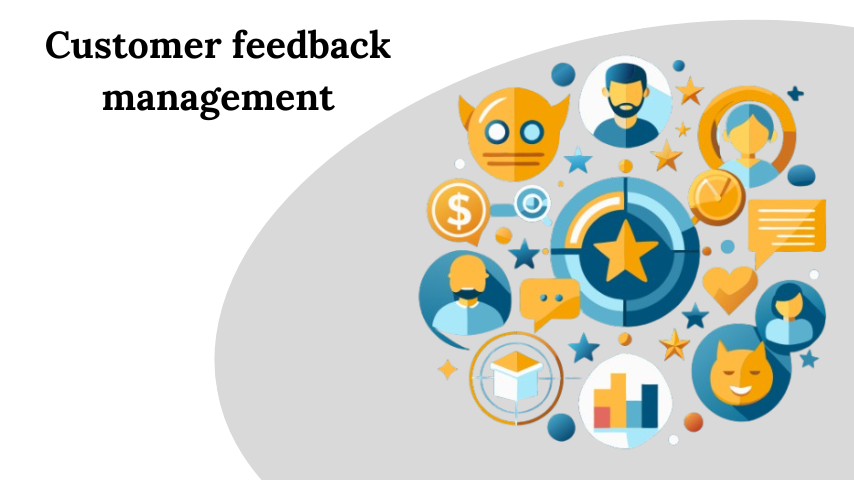Feedback is a critical component of effective management that drives organizational growth, employee development, and strategic improvement. In today’s dynamic business environment, understanding the nuanced role of feedback, particularly customer feedback management, can transform how organizations operate and succeed.
The Fundamental Concept of Feedback in Management
Defining Feedback
Feedback in management is a systematic process of providing constructive information about an individual’s, team’s, or organization’s performance. It serves multiple purposes:
- Performance evaluation
- Personal and professional development
- Organizational learning and improvement
- Communication enhancement
- Strategic alignment
Types of Feedback in Management
Formal Feedback
- Annual performance reviews
- Structured assessment reports
- Systematic evaluation processes
Informal Feedback
- Spontaneous conversations
- Real-time performance discussions
- Impromptu coaching moments
Customer Feedback Management
- Collecting customer insights
- Analyzing customer experience
- Implementing customer-driven improvements
The Psychological Dimensions of Feedback
Psychological Impact
Feedback isn’t merely a transactional communication—it’s a psychological intervention that significantly influences:
- Employee motivation
- Self-perception
- Professional confidence
- Organizational commitment
Effective Feedback Characteristics
Successful feedback demonstrates these key attributes:
- Specificity
- Timeliness
- Constructiveness
- Balanced perspective
- Actionable insights
Customer Feedback Management: A Strategic Approach
Importance in Modern Business
Customer feedback management represents a sophisticated approach to understanding and improving organizational performance through customer perspectives.
Key Components
- Systematic feedback collection
- Comprehensive data analysis
- Strategic implementation of insights
- Continuous improvement mechanisms
Benefits of Robust Customer Feedback Management
- Enhanced product development
- Improved customer satisfaction
- Increased customer loyalty
- Data-driven decision making
- Competitive market positioning
Implementing Effective Feedback Mechanisms
Tools and Techniques
Organizations can leverage various strategies for effective feedback:
Surveys and Questionnaires
- Online feedback forms
- Net Promoter Score (NPS) assessments
- Comprehensive customer satisfaction surveys
Digital Feedback Platforms
- Real-time feedback tracking
- Multichannel collection methods
- Advanced analytics integration
Continuous Performance Management Systems
- Regular check-ins
- Goal tracking
- 360-degree feedback approaches
Challenges in Feedback Management
Common Obstacles
Organizations often encounter challenges such as:
- Resistance to change
- Communication barriers
- Subjective interpretation
- Lack of systematic processes
Overcoming Feedback Challenges
Strategies to address these challenges include:
- Developing a feedback-positive culture
- Training managers in effective communication
- Creating transparent feedback mechanisms
- Establishing clear performance metrics
Best Practices for Effective Feedback
For Managers
- Be specific and objective
- Focus on behaviors, not personality
- Provide balanced perspectives
- Encourage two-way dialogue
- Follow up and track progress
For Organizations
- Create structured feedback frameworks
- Invest in feedback technology
- Promote continuous learning
- Align feedback with strategic goals
Q1: How often should feedback be provided?
Feedback should be continuous, with formal reviews complemented by ongoing, real-time discussions.
Q2: What makes customer feedback management crucial?
It provides direct insights into customer experiences, enabling organizations to adapt and improve continuously.
Q3: How can negative feedback be constructive?
Negative feedback, when delivered professionally and objectively, serves as a catalyst for personal and organizational growth.
Q4: Can feedback be automated?
While initial data collection can be automated, meaningful feedback requires human interpretation and personalized communication.
Q5: How does feedback impact organizational culture?
A robust feedback culture promotes transparency, continuous improvement, and mutual respect.
Conclusion
Feedback in management transcends traditional performance evaluation. It’s a sophisticated, strategic tool that drives organizational excellence, particularly through customer feedback management. By embracing comprehensive, empathetic, and systematic feedback approaches, organizations can unlock unprecedented growth, innovation, and competitive advantage.
The future of management lies not just in collecting feedback, but in transforming insights into actionable strategies that propel businesses forward.
Final Thoughts
Effective feedback is an art and a science—a delicate balance of psychological understanding, strategic thinking, and genuine human connection.
Keywords: feedback management, customer feedback management, organizational performance, employee development, strategic improvement

